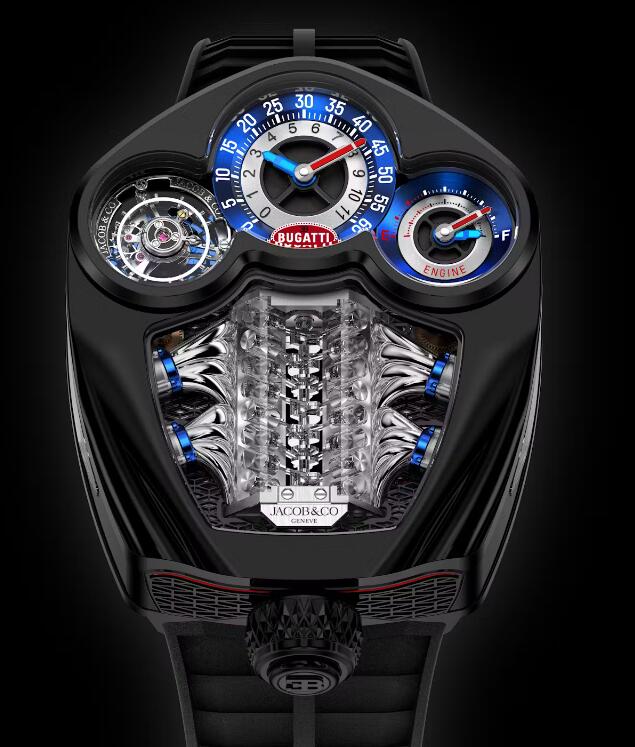What is a Tourbillon? And Why the New Bugatti Tourbillon Supercar Is Named After It

Bugatti has unveiled its new supercar, the Bugatti Tourbillon, and to our pleasant surprise, its name is directly inspired by horology and luxury watchmaking – our home turf here at aBlogtoWatch. After witnessing the vast majority of automotive journalists fail to explain what a tourbillon is when introducing Bugatti’s Tourbillon car, we figured that even automakers have it a little wrong. So we stepped up and read on to find out what a tourbillon really is, and get a little closer to Bugatti’s latest car in the process. This article is more geared toward the automotive enthusiast community than veteran aBlogtoWatch readers and watch enthusiasts – but hey, we’ll cover some cool little details that you might not know either.
So, what is a tourbillon? Tourbillon means “whirlwind” in French (you can read it as “tour-bee-yon”), and it refers to an elaborate mechanical watch complication that creates a spinning motion. Just like a whirlwind. It was invented in 1795 and patented in 1801 by Abraham-Louis Breguet, founder of the luxury watch brand Breguet, which still exists today. What does a tourbillon do? Originally, Breguet designed the tourbillon to make his mechanical pocket watches more consistent in terms of timekeeping.
You see, a mechanical watch movement is very sensitive to where it is positioned – upright, tilted, or lying flat on a table – because their position determines how their tiny timekeeping components are affected by gravity. Imagine a tiny spiral spring (balance spring) that is constantly contracting and expanding 2.5 to 5 times per second. Gravity affects this spring in different ways depending on its orientation in space. What a tourbillon does is put this spring and other components in a small, constantly rotating cage that is always changing its position, thus constantly changing how these components are affected by gravity, thereby improving isochronism (the consistency of the movement’s accuracy) rather than improving accuracy per se.
A tourbillon is the name given to a rotating cage that contains the important timekeeping components that are affected by gravity. By spinning them slowly and continuously, a tourbillon can spread the adverse effects of gravity more evenly across the board, making the performance of a mechanical copy watch more uniform. Sometimes you’ll hear brands use high-sounding terms like “the tourbillon eliminates the effects of gravity,” but much to our disappointment, a tourbillon is not an anti-gravity device.
Now that you know what a tourbillon is, you might be wondering why the new Bugatti Tourbillon supercar is named after it. There are a number of reasons, all fitting for an ultra-luxury car. First, the car reflects high-end watches in more than just its name, as Bugatti explains: “The tourbillon was inspired by the timeless elegance of watchmaking, with a preference for analog design. The instrument panel, crafted by Swiss watchmakers and built to exact watchmaking tolerances, contains more than 600 parts.” The meshing and turning gears and structural components similar to those found inside a watch are all visible, while the speedometer and tachometer are shaped like the hour and minute hands. Pretty cool! Besides, Jacob & Co., Bugatti’s official watch partner, is definitely working on something with a tourbillon…
Why is the tourbillon such a popular and expensive addition to a timepiece? Contrary to what you might expect, it’s not because it improves performance, but because it looks beautiful when it’s in action. The tourbillon is one of the most fascinating features in a mechanical watch because it takes the crazy oscillating parts of a timepiece – the back and forth motion of the balance wheel and the tiny spiral we mentioned above – and places it in a beautifully decorated cage that gently rotates clockwise with a few tiny nudges per second. The tourbillon on almost every timepiece rotates once every 60 seconds. Fast enough to see it moving, slow enough to spin gracefully. So, you can hear the crazy ticking and the graceful spinning, all wrapped up in a cage that’s usually no bigger than half an inch.
Even though there were no watches when Breguet invented the tourbillon, that hasn’t stopped watchmakers, especially in the last 20-30 years, from inventing more amazing ways to apply the tourbillon to their timepieces. For decades, the watch collector community has debated whether the tourbillon improves the accuracy of a watch—as discussed, it doesn’t—but one thing everyone seems to agree on is that the tourbillon is one of the most spectacular and fascinating complications in today’s mechanical watches.
Oh, and it’s not just Bugatti that’s pushing the limits of modern engineering and manufacturing technology—so are the world’s best watchmakers. Using five-axis CNC machines and the latest CAD (computer-aided design) software for design and prototyping, luxury watch brands like Jacob & Co., Greubel Forsey, and Jaeger-LeCoultre have created multi-axis tourbillons, sometimes adding two, three, or even four tourbillons to a single watch! These pose a certain safety hazard while driving, as they literally make it nearly impossible to keep your eyes on the road. Click on the company names above to see our reviews of these incredible fashion luxury watches.
Why? Because while the rotation of a tourbillon is a delight to the eye, it actually makes it harder for watchmakers to adjust the movement for perfect accuracy, and today’s non-tourbillon watch movements are made with such exceptional materials and precision that watch brands can achieve very high timekeeping performance with conventional settings.
